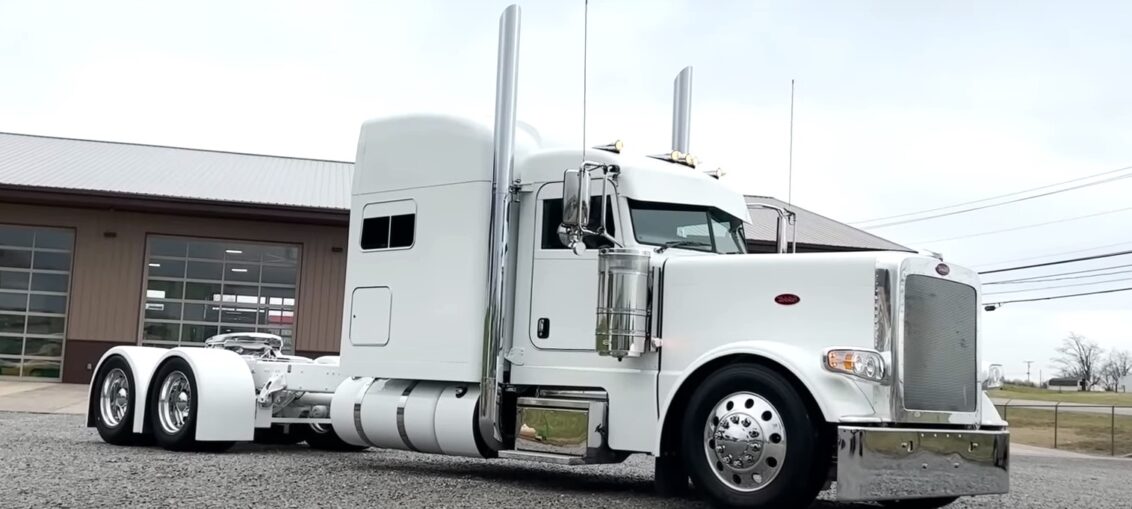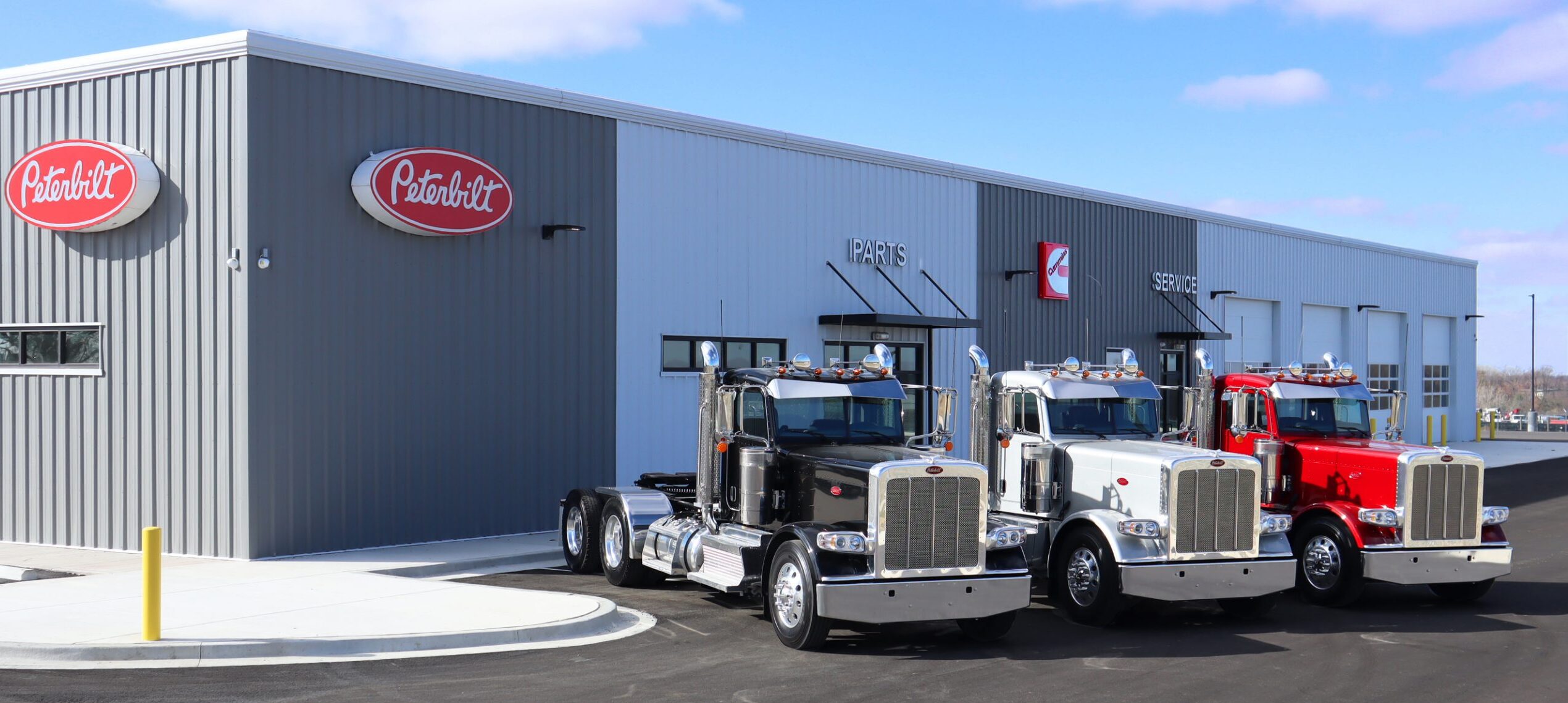
Intro
Peterbilt is a well-known American truck manufacturer that produces heavy-duty trucks for various industries, including construction, logging, and long-haul transportation. The company was founded in 1939 and is headquartered in Denton, Texas. Peterbilt’s lineup includes several popular truck models, including the Peterbilt 389, 579, and 367. These trucks are known for their durability, reliability, and versatility, and are often customized to meet the specific needs of their owners.
Peterbilt 389
Peterbilt 389 is a heavy-duty Class 8 truck model manufactured by Peterbilt Motors Company, which is a division of PACCAR Inc. The Peterbilt 389 is often used for hauling large payloads over long distances and is a popular choice among truck drivers in the United States and other countries. It is known for its durability, reliability, and customizable options, which allow drivers to tailor their trucks to meet their specific needs. The Peterbilt 389 has been in production since 2006 and is considered a successor to the 379 model.
Cabin Options in Peterbilt 389

The Peterbilt 389 is available with a variety of cabin options to suit different needs and preferences. Here are some of the cabin options and features that are commonly available on the Peterbilt 389:
1. Sleeper Cab: The sleeper cab is available in various sizes and configurations, ranging from a 44-inch flat top sleeper to a 72-inch UltraLoft sleeper. The sleeper cab provides a comfortable and spacious living space for the driver, which includes a bed, cabinets, lighting, heating and cooling system, power outlets, and other amenities.
2. Day Cab: The day cab is a non-sleeper configuration that is designed for shorter trips and local hauling. It provides a spacious and ergonomic workspace for the driver, which includes comfortable seating, adjustable steering wheel, advanced instrumentation and controls, and other features.
3. Interior Features: The interior of the Peterbilt 389 can be customized with a range of features and options, including premium upholstery, leather-wrapped steering wheel, wood grain trim, advanced audio and navigation systems, and other amenities. The cabin also features ample storage space for personal items and equipment.
4. Exterior Features: The exterior of the Peterbilt 389 can be customized with a range of options, including various paint and decal designs, chrome or stainless steel accents, custom lighting and grille designs, and other features.
The cabin of the Peterbilt 389 is designed to be comfortable, functional, and durable, which helps to maximize driver productivity and satisfaction. It also features advanced safety features, such as airbags, seat belts, and collision avoidance systems, to help protect the driver in the event of an accident.
Engine options in Peterbilt 389

The Peterbilt 389 is available with a variety of engine options to suit different needs and preferences. Here are some of the engine options that are commonly available on the Peterbilt 389:
1. PACCAR MX-13: This is a 12.9-liter engine that produces up to 510 horsepower and 1,850 pound-feet of torque. It features advanced fuel injection and exhaust after-treatment systems to improve fuel efficiency and reduce emissions.
2. Cummins X15: This is a 15-liter engine that produces up to 605 horsepower and 2,050 pound-feet of torque. It features advanced fuel system and after-treatment technologies to provide excellent performance and efficiency.
3. Caterpillar C15: This is a 15.2-liter engine that produces up to 625 horsepower and 2,050 pound-feet of torque. It features a rugged, durable design and is known for its reliability and long service life.
4. Detroit DD15: This is a 14.8-liter engine that produces up to 505 horsepower and 1,850 pound-feet of torque. It features advanced fuel and air management technologies to provide excellent performance and efficiency.
The engines on the Peterbilt 389 are designed to meet or exceed the emissions standards set by the Environmental Protection Agency (EPA) and the California Air Resources Board (CARB). They are also designed to be durable, reliable, and easy to service, which helps to minimize downtime and maintenance costs.
The weight that Peterbilt 389 can carry

The weight that a Peterbilt 389 can carry, also known as its payload capacity, depends on several factors such as the configuration, axle ratio, suspension type, and other equipment. However, as a heavy-duty Class 8 truck, the Peterbilt 389 has a maximum gross vehicle weight rating (GVWR) of up to 80,000 pounds (36,287 kilograms). This weight includes the weight of the truck, its fuel, and any cargo or trailer being carried. The actual payload capacity may be lower than the maximum GVWR depending on the specific configuration and legal weight limits in the area where the truck is operating. It’s important to properly load and secure cargo to ensure safe and legal operation of the vehicle.
Top Speed of Peterbilt 389

The top speed of a Peterbilt 389 can vary depending on the specific configuration and equipment. However, most models are governed electronically to limit their top speed to around 65-70 miles per hour (105-113 kilometers per hour) for safety and fuel efficiency reasons. Some models may have higher or lower speed limits depending on the intended use and local regulations. It’s important to note that exceeding the speed limit or driving recklessly is not only dangerous, but it can also result in legal consequences and damage to the vehicle.
Where to buy the Peterbilt 389

There are several ways to buy a Peterbilt 389 in the USA. One option is to visit a Peterbilt dealership, which can be found in various locations throughout the country. You can find a list of Peterbilt dealerships on the Peterbilt website. Another option is to search for Peterbilt 389 trucks for sale on online marketplaces such as TruckPaper, CommercialTruckTrader, or eBay. These websites allow you to search for trucks based on your location, budget, and other preferences. Additionally, you can attend truck auctions, which can be found through websites like AuctionTime or Ritchie Bros. Auctioneers, to potentially find a used Peterbilt 389 for sale. It’s important to thoroughly research and inspect any vehicle before making a purchase to ensure that it meets your needs and is in good condition.
Prices
The price of a new or used Peterbilt 389 can vary widely depending on several factors such as the year, model, engine, transmission, and other equipment. Additionally, prices can also vary based on the location, availability, and demand for the truck. Here is a general idea of the price range for a new and used Peterbilt 389:
1. New Peterbilt 389: The base price for a new Peterbilt 389 starts around $150,000 and can go up to $200,000 or more depending on the selected options and features.
2. Used Peterbilt 389: The price for a used Peterbilt 389 can vary widely depending on the age, condition, mileage, and other factors. Generally, a used Peterbilt 389 can be found for anywhere between $50,000 to $150,000 or more.
It’s important to note that these are only rough estimates and that actual prices can vary based on a range of factors. It’s always recommended to do thorough research and inspections before purchasing any new or used vehicle to ensure that you are getting a fair price and a reliable truck.
Competitors
The Peterbilt 389 is a popular heavy-duty truck in the North American market, and it competes with other truck brands in the same class. Here are some of the competitors of the Peterbilt 389:
1. Kenworth W900: The Kenworth W900 is a heavy-duty truck that is often compared to the Peterbilt 389. It features a classic, iconic design and is known for its durability, reliability, and comfort.
2. Freightliner Cascadia: The Freightliner Cascadia is a popular heavy-duty truck that is known for its fuel efficiency, advanced safety features, and modern design. It is often used for long-haul trucking and can be configured with a range of options and features.
3. Volvo VNL: The Volvo VNL is a heavy-duty truck that is known for its advanced technology, fuel efficiency, and comfort. It features a sleek, modern design and is often used for long-distance hauling.
4. International LoneStar: The International LoneStar is a heavy-duty truck that is known for its distinctive, aerodynamic design and advanced technology. It is often used for long-haul trucking and can be configured with a range of options and features.
These are just a few of the competitors of the Peterbilt 389 in the heavy-duty truck market. Each of these brands has its own strengths and features, and the choice of truck ultimately depends on the specific needs and preferences of the buyer.
Conclusions
Buying or owning a Peterbilt 389 depends on your specific needs and budget. Here are some potential pros and cons to consider when evaluating this truck model:
Pros:
1. The Peterbilt 389 is a heavy-duty truck designed for long-haul transportation and other demanding applications.
2. It is known for its durability, reliability, and versatility, and can be customized to meet your specific needs.
3. The 389 features a spacious and comfortable cab, advanced technology, and a range of safety features to help ensure driver comfort and safety.
4. Peterbilt has a reputation for quality and provides a range of services and support to their customers, including maintenance and repair, financing, and training programs.
Cons:
1. The Peterbilt 389 is a high-end truck that can be expensive, especially when purchased new.
2. The fuel economy of the 389 may not be as efficient as some other trucks, which can lead to higher operating costs.
The size and weight of the 389 may not be suitable for all applications, especially those that require maneuverability in tight spaces or on narrow roads.
Trucks Gallery is a website that its dedicated to trucking. Here you can find all kinds of facts about a truckers lifestyle, informations about different kind of trucks and so many more. All accompanied by a photo gallery. Also you can follow us in our Instagram Page: truckk_lovers We thank you all for your support.
I think the Peterbilt 389 is one of the best trucks ever produced! 🙂
Perfect review! Valuable information, keep it up guys! 👍